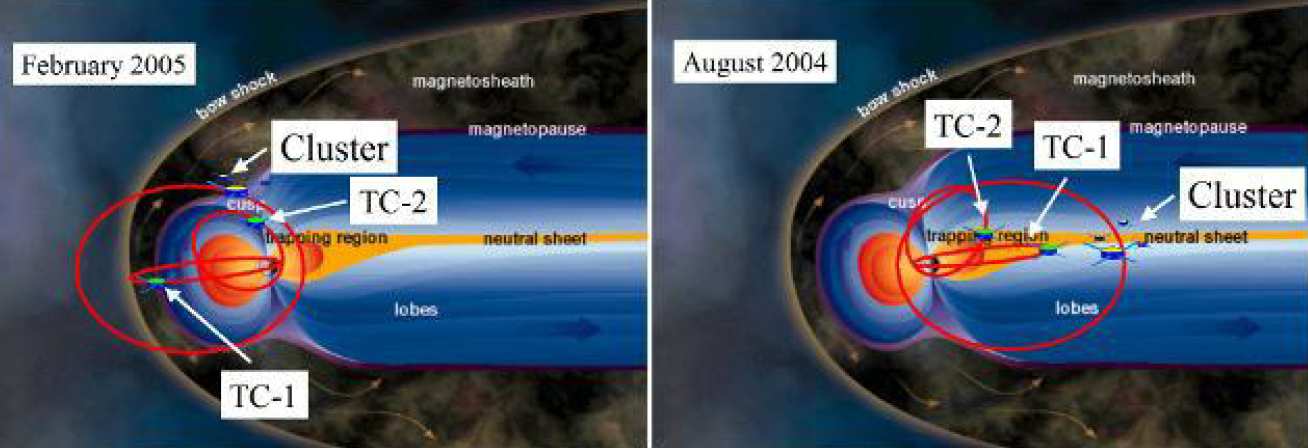Double Star is the first mission launched by China to explore the Earth's magnetosphere, and it is the first mission realised in collaboration between China and ESA. The mission comprises two spacecraft which investigate global magnetospheric processes and their response to variations in interplanetary conditions. The orbits have been designed to complement the Cluster mission by maximising the time when both Cluster and Double Star are in the same scientific regions. Together, the two missions allow six-point observation of the magnetosphere. The project has the following main objectives:
- To study the transport of solar wind plasma into the magnetosphere
- To study magnetic reconnection at the magnetopause and in the magnetotail
- To understand and locate trigger mechanism for magnetospheric storms
- To understand plasma acceleration mechanisms
- To study physical processes such as particle acceleration, diffusion, injection and upflowing ions during storms
The DoubleStar and Cluster orbits are aligned to maximise the number of simultaneous crossings of the important regions such as the cusp and neutral sheet. During tail seasons, the spacecraft are able to study the substorm initiation: Cluster is in the mid-tail with TC-1 in the near-Earth region and TC-2 crossing the nighside auroral zone. During the dayside season, Cluster is often in the solar wind while TC-1 is at the bow-shock (or magnetopause) and TC-2 in the cusp.

Useful Links
DoubleStar Links: